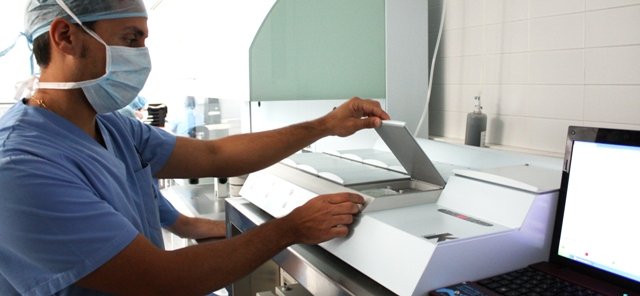Does taking embryos out of the incubator for regular analysis affect development? IB clinical study. ESHRE 2016
06-07-2016

Instituto Bernabeu’s commitment to giving patients the best chance of achieving pregnancy means we necessarily need to personalise each treatment and involve each department from each phase of assisted reproduction treatment in exploring new options, however insignificant they may seem. This can, sometimes, mean the difference between success and a negative beta result.
The IB embryology department will present a new clinical study at the ESHRE annual congress – the world’s most significant reproductive medicine event – which aims to determine if embryo evaluation or observation outside the incubator (during development in the in vitro fertilisation laboratory until they reach blastocyst stage) may have a negative impact and reduce pregnancy rates. In order to carry out observations, biologists need to remove embryos from their incubators for a few seconds and this generates changes in temperature, pH and osmotic concentration in embryo culture mediums. The research also evaluates time lapse systems which could have a harmful impact because of light exposure when pictures are taken, more or less every 10 minutes.
In order to do the research, a double blind prospective randomised control was designed in which the patients studied were divided into a control group (normal embryo observations on days 2 and 3 of development) and a study group. In the latter, no embryo observations were carried out until transfer to the uterus following 5 days of growth. These embryos were left alone throughout the incubation process.
The results obtained are preliminary since the research is still under way. However, having analysed 130 cases, we are able to indicate that the fertilisation rates were similar in the two groups. The result obtained in the group which underwent observation was 75%, whilst it was 78% in the group which did not receive observation. In both groups, embryo transfer was carried out during blastocyst stage after 5 days of growth and having selected the best embryo based on morphological criteria.
The data obtained to date provides us with various bits of information. It would appear that embryo observations on days 2 and 3 of growth do not affect clinical results. In other words, the information gathered through observing embryos on days 2 and 3 is of little use since it does not provide us with any significant information for posterior selection when it is time to transfer.
A single embryo evaluation on day 5 prior to transfer or vitrification gives the same clinical results as when daily observation is carried out. As well as a reduction in the cost of treatment, it also questions the predictive value of embryo morphology during early stages.
Do not disturb embryos until day 5: preliminary results of a double blind prospective randomized controlled trial
J. Ten, A. Rodríguez-Arnedo, J. Guerrero, B. Moliner, J. Ll. Aparicio, R. Bernabeu
ORAL COMMUNICATION ESHRE 2016, HELSINKI
